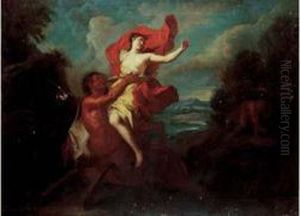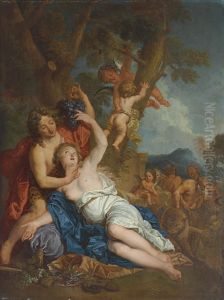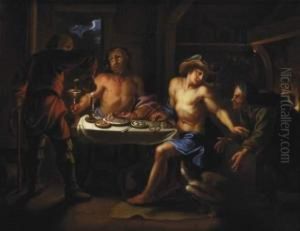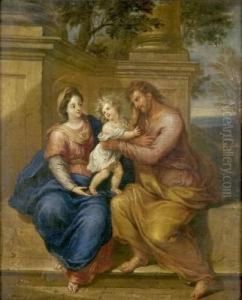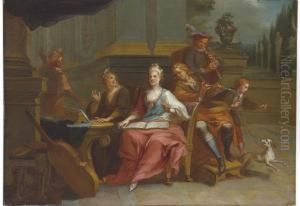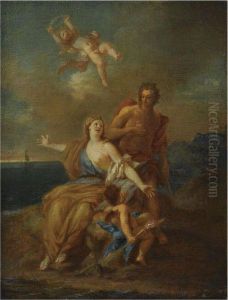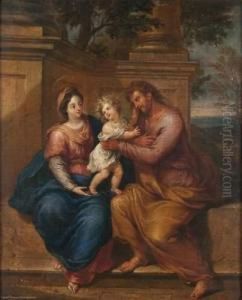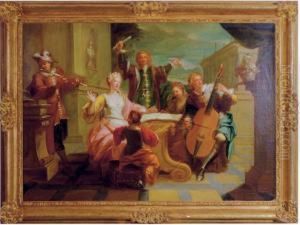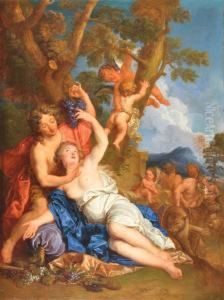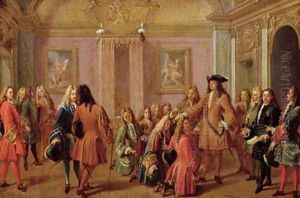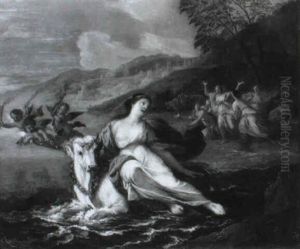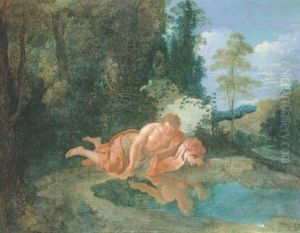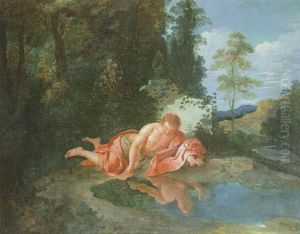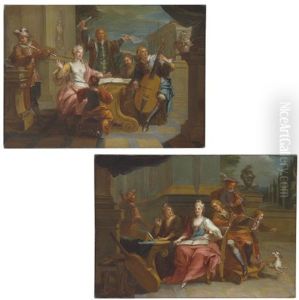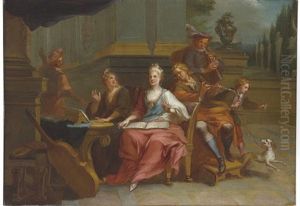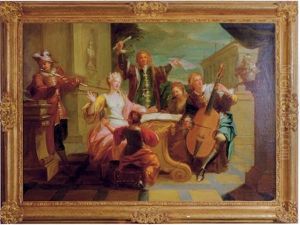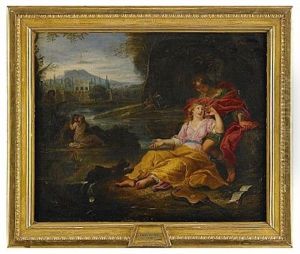Francois Marot Paintings
Francois Marot was a French engraver and architect who played a significant role in the artistic scene of his time. Born in Paris in 1666, he was part of a family with a strong artistic tradition; his father, Jean Marot, was also a well-known engraver and architect, and his uncle, Daniel Marot, was a designer who worked extensively in the Netherlands and England. This rich family environment provided Francois with an excellent foundation in the arts from a young age.
Marot's work primarily consisted of engravings, which were highly detailed and reflected the grandeur of French architecture and landscape design during the reign of Louis XIV. His engravings served as a form of documentation of contemporary buildings and gardens, including those at Versailles, and they were instrumental in spreading the French classical style across Europe. Francois Marot inherited his father's position as an engraver to the king, which allowed him access to many important projects and commissions.
Apart from his engravings, Marot also engaged in architectural work, although his contributions in this field are less well-documented than his graphic art. His architectural style was influenced by the classical French tradition, and he may have been involved in designing some private residences and possibly some modifications to existing structures.
Francois Marot's significance lies not only in his artistic output but also in his role in disseminating French taste and style throughout Europe during a time when France was a leading cultural center. His works were collected and studied by architects, designers, and patrons, helping to spread the principles of French classicism.
Marot passed away in 1719, leaving behind a legacy as a key figure in the transmission of French artistic ideas. His engravings continue to be important historical records of the period's architecture and landscape design, offering insight into the aesthetic preferences and cultural aspirations of the French elite during the late 17th and early 18th centuries.
